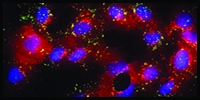Home About Us Team Products News Contact FAQ

A80-A89 Viral & Prion Infections-
Central Nervous System
A80.0
Acute Paralytic Poliomyelitis- Vaccine-
Associated
A80.1
Acute Paralytic Poliomyelitis-Wild Virus-
Imported
A80.2
Acute Paralytic Poliomyelitis- Wild Virus- Indigenous
A80.3
Acute Paralytic Poliomyelitis-Other & Unspecified
A80.4
Acute Nonparalytic Poliomyelitis
A80.9
Acute Poliomyelitis- Unspecified
A81 Atypical Virus Infections-Central Nervous System
A81.0
Creutzfeldt-Jakob Disease
A81.1
Subacute Sclerosing Panencephalitis
A81.2
Progressive Multifocal Leukoencepha-lopathy
A81.8
Other Atypical Virus Infections-Central Nervous System
A81.9
Atypical Virus Infection-Central Nervous System- Unspecified
A82 Rabies
A83 Mosquito-Borne Viral Encephalitis
A83.0
Japanese Encephalitis
A83.1
Western Equine Encephalitis
A83.2
Eastern Equine Encephalitis
A83.3
St Louis
Encephalitis
A83.4
Australian Encephalitis
A83.5
California Encephalitis
(La Crosse Virus)
A83.6
Rocio Virus Disease
A84 Tick-Borne Viral Encephalitis
A84.0
Far Eastern Tick-Borne Encephalitis [Russian Spring-Summer Encephalitis]
A84.1
Central European Tick-Borne Encephalitis
A84.8
Other
Tick-Borne Viral Encephalitis
A84.9
Tick-Borne Viral Encephalitis,-Unspecified
Viral and prion infections of the central nervous system A80-A89 >
Acute poliomyelitis A80- >
Clinical Information
Acute infectious disease of humans, particularly children,
caused by any of three serotypes of human poliovirus; infection is
usually limited to the gastrointestinal tract and nasopharynx, and
is often asymptomatic; the central nervous system, primarily the
spinal cord, may be affected, leading to rapidly progressive paralysis,
coarse fasciculation and hyporeflexia; motor neurons are primarily
affected and encephalitis may also occur; replicates in the nervous
system, and may cause significant neuronal loss, most notably in the
spinal cord.
An acute infectious disease of humans, particularly children, caused
by any of three serotypes of human poliovirus (poliovirus). Usually
the infection is limited to the gastrointestinal tract and nasopharynx,
and is often asymptomatic. The central nervous system, primarily the
spinal cord, may be affected, leading to rapidly progressive paralysis,
coarse fasciculation and hyporeflexia. Motor neurons are primarily
affected. Encephalitis may also occur. The virus replicates in the
nervous system, and may cause significant neuronal loss, most
notably in the spinal cord. A rare related condition, nonpoliovirus
poliomyelitis, may result from infections with nonpoliovirus enteroviruses.
An acute infectious disorder that affects the nervous system. It is caused
by the poliovirus. The virus spreads by direct contact, and can be prevented
by prophylaxis with the polio vaccine.
Rabies A82- >
Clinical Information
A disease of the nervous system caused by the rabies virus. Rabies is
marked by an increase in saliva production, abnormal behavior, and
eventual paralysis and death.
A life-threatening viral infection caused by the neurotropic rabies
virus. It is transmitted to humans usually from a bite by an infected
dog. The initial signs and symptoms include malaise, fever, and headache,
followed by the central nervous system manifestations which include abrupt
behavioral changes. Paralysis, lethargy, and coma follow the behavioral
changes.
Acute infectious disease of the central nervous system affecting almost
all mammals, including humans; it is caused by a rhabdovirus and usually
spread by contamination with virus-laden saliva of bites inflicted by
rabid animals; important animal vectors include the dog, cat, vampire bat,
mongoose, skunk, wolf, raccoon, and fox.
Acute viral cns infection affecting mammals, including humans. It is caused
by rabies virus and usually spread by contamination with virus-laden saliva
of bites inflicted by rabid animals. Important animal vectors include the
dog, cat, bat, fox, raccoon, skunk, and wolf.
Rabies is a deadly animal disease caused by a virus. It can happen in wild animals,
including raccoons, skunks, bats and foxes, or in dogs, cats or farm animals.
People get it from the bite of an infected animal. In people, symptoms of rabies
include fever, headache and fatigue, then confusion, hallucinations and paralysis.
Once the symptoms begin, the disease is usually fatal. A series of shots can
prevent rabies in people exposed to the virus. You need to get them right away.
If an animal bites you, wash the wound well; then get medical care. To help prevent rabies
vaccinate your pet. Rabies vaccines are available for dogs, cats and farm animals
don't let pets roam don't approach stray animals. Animals with rabies might be
aggressive and vicious, or tired and weak
Tick-borne viral encephalitis A84- >
Includes
tick-borne viral meningoencephalitis
Clinical Information
Encephalitis caused by neurotropic viruses that are transmitted via the bite of
ticks. In europe, the diseases are caused by encephalitis viruses, tick-borne,
which give rise to russian spring-summer encephalitis, central european
encephalitis, louping ill encephalitis, and related disorders. Powassan
encephalitis occurs in north america and russia and is caused by the powassan
virus. Aseptic meningitis and rarely encephalitis may complicate colorado
tick fever which is endemic to mountainous regions of the western United States.
Unspecified viral encephalitis A86- >
Applicable To
Viral encephalomyelitis NOS
Viral meningoencephalitis NOS
Clinical Information
Inflammation of brain parenchymal tissue as a result of viral infection.
Encephalitis may occur as primary or secondary manifestation of togaviridae
infections; herpesviridae infections; adenoviridae infections; flaviviridae
infections; bunyaviridae infections; picornaviridae infections; paramyxoviridae
infections; orthomyxoviridae infections; retroviridae infections; and
arenaviridae infections.
Viral meningitis A87- >
Clinical Information
Viral infections of the leptomeninges and subarachnoid space.
Viral infections of the leptomeninges and subarachnoid space. Togaviridae
infections; flaviviridae infections; rubella; bunyaviridae infections;
orbivirus infections; picornaviridae infections; orthomyxoviridae infections;
rhabdoviridae infections; arenaviridae infections; herpesviridae infections;
enoviridae infections; jc virus infections; and retroviridae infections may
cause this form of meningitis. Clinical manifestations include fever,
headache, neck pain, vomiting, photophobia, and signs of meningeal
irritation.
A85.0
Enteroviral Encephalitis
A85.1
Adenoviral Encephalitis
A85.2 Arthropod-Borne Viral Encephalitis- Unspecified
A85.8
Other Specified Viral Encephalitis
A86 Unspecified Viral Encephalitis
A86
Unspecified Viral Encephalitis
A87 Viral Meningitis
A87.0
Enteroviral Meningitis
A87.1
Adenoviral Meningitis
A87.2
Lymphocytic Choriomeningitis
A87.8
Other Viral Meningitis
A87.9
Viral Meningitis- Unspecified

A88 Other Viral Infections Central Nervous System-Not Elsewhere Classified
A88.0
Enteroviral Exanthematous Fever [Boston Exanthem]
A88.1
Epidemic
Vertigo
A88.8
Other Specified Viral Infections Central Nervous System
A89 Unspecified Viral Infection Central Nervous System
A89
Unspecified Viral Infection Central Nervous System
™


.png?crc=4187891543)